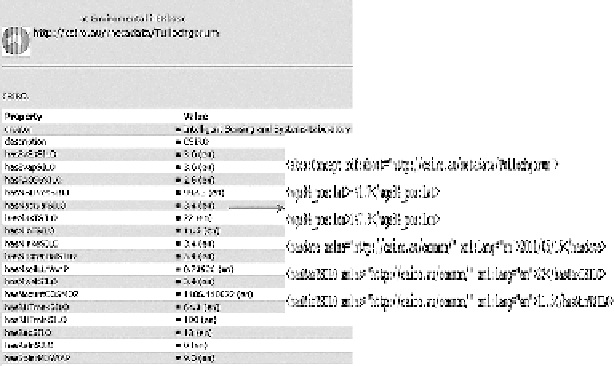Database Reference
In-Depth Information
the purpose of the SOM on the database was to provide a visual knowledge recom-
mendations system. Based on the knowledge recommendation, qualitatively one user
could also optimize the “Big Data” usage by prioritizing and minimizing unwanted
data download and reducing data-processing time.
15.4.5.4 Knowledge as RDF on LOD
There were two stages of RDF representations for the whole architectural knowledge
recommendation process. Harmonized and preprocessed integrated semantic feature
series data matrix were converted in RDF format with unique URIs assigned to each
of semantic entry. All metadata associated with these time series were also converted
into RDF format to present the data and existing knowledge about the data in a uni-
fied way [2,20,23,24,50,57,72]. The recommendation results from the machine learn-
ing clustering algorithms were also converted into the RDF format to represent the
extracted knowledge completely machine readable and programmatically accessible.
The recommendation about the knowledge was also added to the original feature base
to enhance the meta-features to make it more meaningful. Furthermore, the prove-
nance information (such as origin of data, author, and time along with all the raw data)
was also captured within the integrated RDF knowledge file and stored into the triple
store knowledge base. In future provenance information could be used for data quality
assurance or data security issues [3,4,6,11,30-32,40]. The data integration processes
were based on the following steps:
•
Convert preprocessed feature data, and metadata into RDF format
•
Store the RDF data into the triple store
•
Read the metadata from the source specific triple store
•
Match the metadata based on a syntactic matching technique
•
Publish integration results into a new integrated RDF file
•
Store back the final RDF file into the triple store
FIGURE 15.16
User interface layer on top of triple store.

Search WWH ::

Custom Search